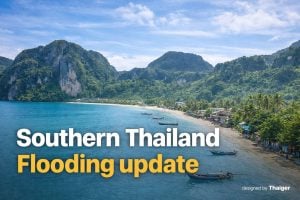Blazing Saddles: Safe cycling in Thailand

PHUKET: The tragic events of the past year have raised the title of this article, ‘Safe Cycling in Thailand’, from a mere eyebrow-raising non sequitur, to the status of a full-blown oxymoron.
Following the litany of cyclists’ deaths on Thailand’s roads, many would say there is no such thing as safe cycling in Thailand and that the activity should be banned from the country’s bloodied tarmac.
Sadly for Thailand and its all important ‘image’, some of the accidents have garnered worldwide attention as they involved cyclists who were on global long-distance trips to raise funds for various worthwhile causes. These tragic victims of Thailand’s immensely dangerous driving culture had successfully navigated their way across many countries prior to arriving in the Land of Smiles, only to be mowed down by inept, careless or inebriated drivers for the entire world to see and report.
On February 18, 2013, Britain’s Guardian newspaper ran this story:
“A British couple’s round-the-world cycling odyssey ended in tragedy when both of them were killed in a road accident in Thailand.
Peter Root and Mary Thompson, who had been chronicling their journey in a blog, died on Wednesday when they were hit by a truck in a province east of Bangkok. The couple, both 34 and from Guernsey in the Channel Islands, had been cycling through Europe, the Middle East, Central Asia and China since July 2011.
Thai police said that investigators found their bodies, their bicycles and their belongings scattered along a roadside, along with a pick-up truck that had crashed between some trees. The truck driver, 25-year-old Worapong Sangkhawat, was seriously injured in the crash and faces charges of causing death by dangerous driving.”
And this one appeared in the Daily Mail earlier this year:
“A Chilean cyclist’s quest to bike around the world in five years has ended with his death in a road accident in northeast Thailand.
Police say the 47-year-old Juan Francisco Villa Honorato was hit by a pick-up truck and immediately killed on a highway in Nakhon Ratchasima province. Col Torsak Thammingmongkol says the driver was arrested on a charge of causing death by dangerous driving and released on bail.”
Clearly these tragedies are a public relations nightmare for Thailand and make a mockery of recent assertions from the Tourism Authority of Thailand that they plan to promote the Kingdom as a cyclist-friendly destination.
These recent disasters also prompted a typically ill-thought-out, knee-jerk reaction from top officials at the Bangkok Metropolitan Administration and the Department of Land Transport who suggested that a cycling licence was the way to make Thailand’s roads safer.
Just for the record, Thailand used to have a law requiring cyclists to get a cycling licence. It was introduced 80 years ago when bicycles and other non-motorized vehicles were still a major mode of travel and it was revoked in 2003 because it no longer made sense.
In fact, licences have nothing to do with Thailand’s appalling driving conditions, the deaths and injuries from which are the second worst in the world per capita.
Under existing laws, all vehicle drivers are supposed to carry a current licence, and their doing so makes not one iota of difference to the savage aggression and stupidity which is the daily norm on Thailand’s roads.
A vast majority of cyclists are also drivers of other motor vehicles and know only too well the extreme danger of taking to Thailand’s roads on a bicycle. Only a highly skilled and confident cyclist would do so, and so a test of cycling competency is an entirely redundant piece of grandstanding which fails to address the real solution to the problem.
Thailand’s vehicle drivers will never improve, and so the real solution to the cycling carnage is to separate cyclists and other road users to the greatest degree possible.
Britain’s National Cycle Network, founded 20 years ago, is a classic working example of this concept. It is a series of safe, traffic-free paths and quiet on-road cycling and walking routes that connects to every major town and city in Britain. The Network passes within two kilometers of half of all homes in the country and stretches over 22,000 kilometers across the length and breadth of the UK.
Almost five million people use the National Cycle Network, not just for cycling, as the routes are also popular with walkers, joggers, wheelchair users and horse riders too.
Phuket is a prime location in which Thailand could start introducing such segregated cycling and walking trails. Around the Bang Wad Dam, or closing off the Nai Harn Lake loop, or the Mai Khao loop at various times for non-motorized use would be easy options to start with.
Promoting bike rentals, food and drink stalls and post-ride massages are easy ways to monetize such an initiative and offset administrative costs.
All this takes is a little planning, the political will to support it, plus clean and transparent management.
Could such positive steps be fostered in Thailand as a way of at least building a positive response to the awful biking tragedies that have already occurred here?
Only time will tell.
— Baz Daniel
Latest Thailand News
Follow The Thaiger on Google News:


























